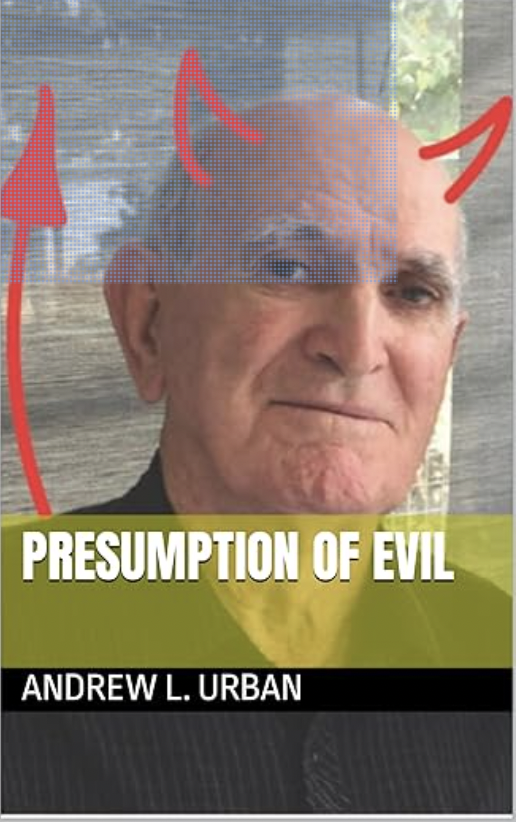Andrew L. Urban.
I visited Noel Greenaway in maximum security last year. As he came out to greet me, I made a mental note that he was wearing spotless white overalls; prison issue. How ironic, I thought, yet how fitting. The man convicted of egregious sexual and physical abuse of troublesome teenage girls nearly half a century ago – wrongfully, I maintain – is issued a white garment symbolic of innocence by the very system that destroyed the presumption of his innocence.
In my book, Presumption of Evil, I shine the written spotlight on his case, drawing on court transcripts, diaries, personal reflections and painful family recollections. His guilt was not established beyond reasonable doubt. Indeed, it was not established to any level.
By relying on untested claims, the court reversed the onus of proof. His innocence is not something he should have had to try and prove in our criminal justice system.
His accusers, referred to as victims from the time they made their complaints, had no corroborative evidence to present nor were they required to. Many people don’t know that. As the judge told the jury, the evidence is what the complainants said in court. She said, he said…and what she said goes.
That’s how the law currently stands in such cases, with the furious agreement of the #MeToo movement.
As I detail in my book, the court was provided with dozens of glowing character references for the law-abiding, morally upright Noel Greenaway for the purposes of sentencing (little good did they do him). But the characters of his accusers were never examined. Of course, the jury didn’t get to see Noel’s character references, but my point is how the presumption of innocence is lost in such cases.
Another case I studied involving sexual abuse, also historic, resulted in a conviction which is so obviously wrongful it doesn’t need a lawyer to see it. The man was convicted and jailed, satisfying the desire of the complainant who had alerted him before she even made the complaint that she set out to destroy his happy family – of which she had been a well treated member. But like Oliver, she wanted more …
When unscrupulous women take advantage of the new mantra that we should ‘believe all women’, they attack the presumption of innocence and become the unrestrained hunters of men. Their reasons are varied and do not really matter. Revenge, politics, fame or monetary reward, justice is abused, with help from a deformed new legal privilege.
Innocent men have become collateral damage. Teen Vogue columnist and outspoken feminist Emily Lindin came under fire on social media in November 2017 after tweeting that she was “not at all concerned about innocent men losing their jobs” over false allegations of sexual assault or harassment. Perhaps karma might change her mind …
 As I explain in the book, child sex abuse is today’s crimen exceptum – a crime so exceptional that the established rules of justice need not be applied to it. And adult sex abuse is not far behind. Misusing allegations of sexual assault for an ulterior purpose is a uniquely female weapon.
As I explain in the book, child sex abuse is today’s crimen exceptum – a crime so exceptional that the established rules of justice need not be applied to it. And adult sex abuse is not far behind. Misusing allegations of sexual assault for an ulterior purpose is a uniquely female weapon.
But that is wrong. If society exempts one category of crime from the established rules of justice which set guidelines for the protection of the accused, we are back in the dark ages where justice was an aspiration not a reality and every citizen at risk of the massive powers of the state disabling the presumption of innocence.
At the start of my book I quote an observation from the ancient Greek philosopher, Plato: The worst form of injustice is pretended justice.

 As I explain in the book, child sex abuse is today’s crimen exceptum – a crime so exceptional that the established rules of justice need not be applied to it. And adult sex abuse is not far behind. Misusing allegations of sexual assault for an ulterior purpose is a uniquely female weapon.
As I explain in the book, child sex abuse is today’s crimen exceptum – a crime so exceptional that the established rules of justice need not be applied to it. And adult sex abuse is not far behind. Misusing allegations of sexual assault for an ulterior purpose is a uniquely female weapon.